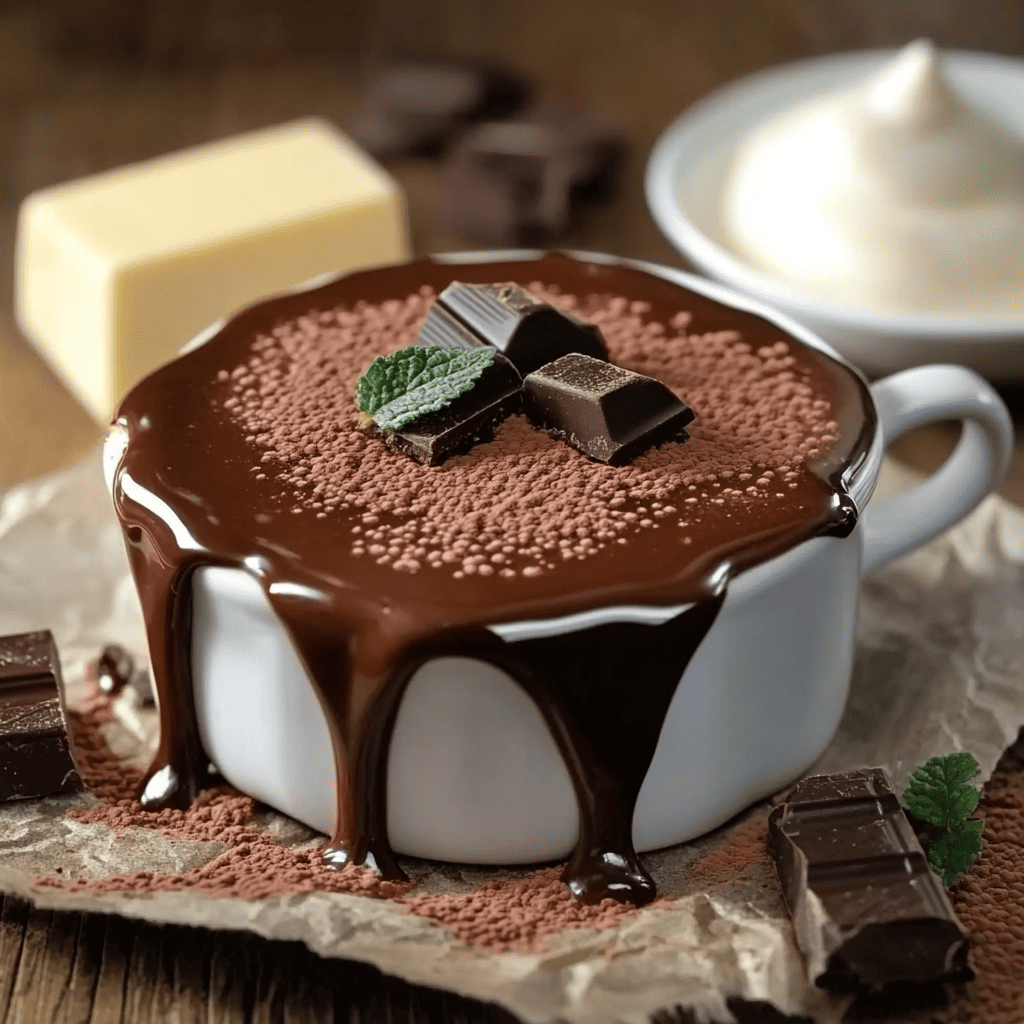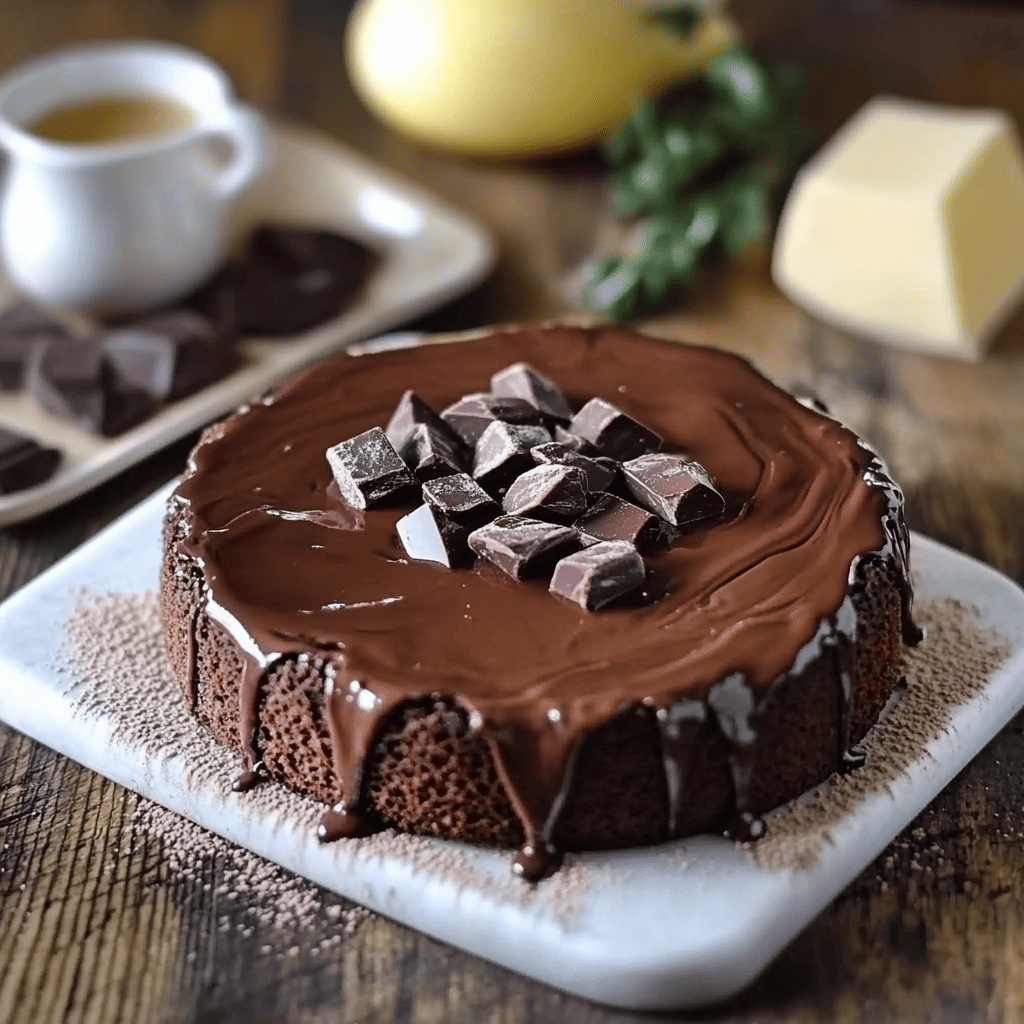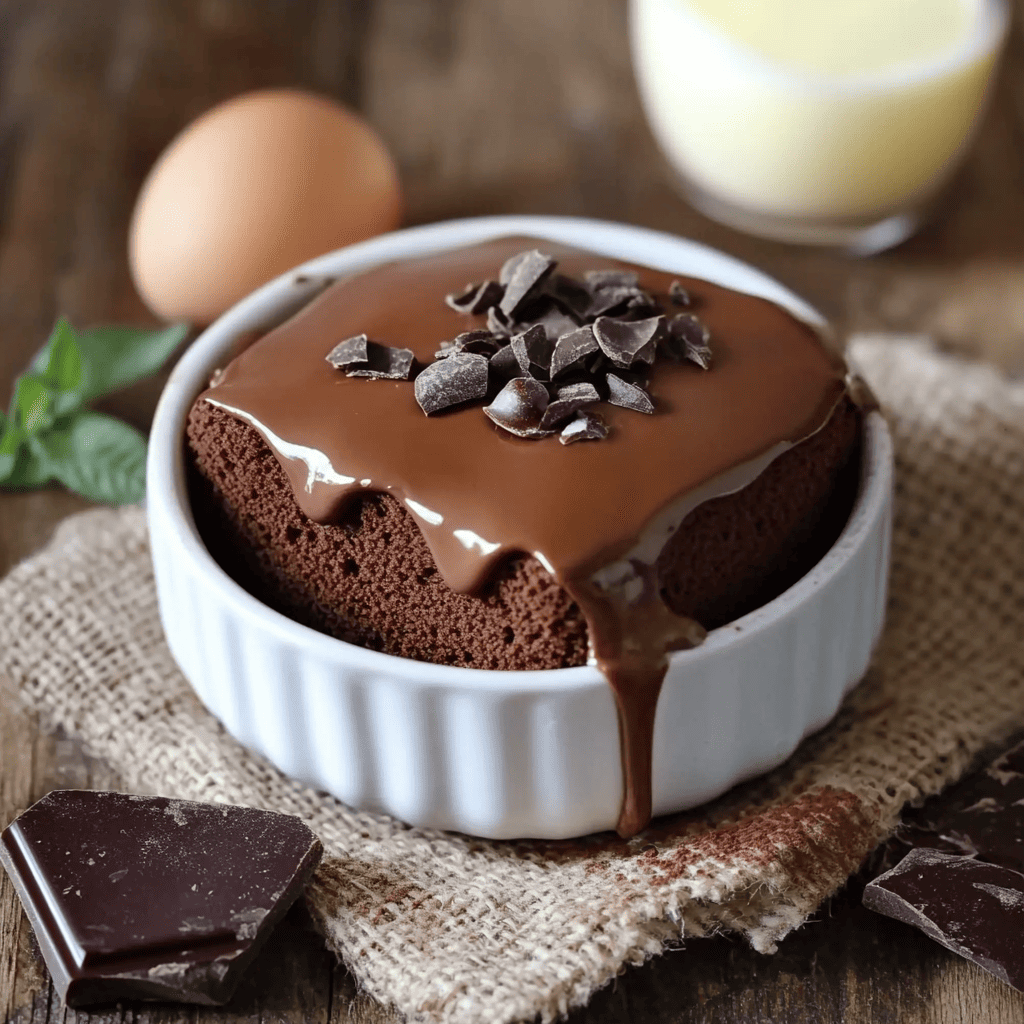The Chocolate Cake
Introduction
Chocolate cake is one of the most beloved desserts in the world. Its intense flavor, spongy texture, and versatile decoration make it an ideal choice for celebrations and special occasions. Over time, this delicacy has evolved into multiple variations that incorporate ingredients and techniques from different cultures.
This exposé will explore the history of chocolate cake, the steps involved in its preparation, and its importance in gastronomy and global culture.
Chocolate cake is one of the most popular and beloved desserts in the world. Its distinctive flavor, spongy texture, and the ability to combine it with different fillings and toppings have made it a classic pastry. From simple versions to gourmet creations, chocolate cake is an ideal choice for celebrations and special occasions.
The origin of chocolate dates back to ancient Mesoamerican civilizations, such as the Mayans and Aztecs, who consumed cacao as a bitter beverage and considered it a sacred food. With the arrival of Europeans in the Americas, cacao was introduced into new recipes and, over time, became an essential ingredient in pastries.
Chocolate cake, as we know it today, began to gain popularity in the 19th century thanks to advances in cocoa powder production and the incorporation of modern baking techniques. Today, there are multiple variations of this dessert, from the classic chocolate sponge cake to more sophisticated versions with fillings, frostings, and elaborate decorations.
This exposé will explore the history of chocolate cake, its production process, and its impact on global gastronomy and culture. A detailed recipe will also be provided so anyone can prepare this delicious dessert at home.
History of Chocolate Cake
Chocolate has been a valued ingredient since the time of pre-Columbian civilizations in the Americas. The Mayans and Aztecs used it as a bitter drink and considered it a food of the gods. With the arrival of Europeans to the Americas in the 16th century, cacao was brought to Europe, where it began to be mixed with sugar and milk, transforming into the chocolate we know today.
The first recorded chocolate cake emerged in the 19th century, when pastry chefs began incorporating cocoa powder into cake batters. With the advancement of baking and the industrialization of chocolate, new versions of this dessert emerged, such as the moist chocolate cake, the chocolate soufflé, and the famous “devil’s food cake.”
Today, chocolate cake is a classic in global confectionery, with countless variations that include cream fillings, ganache toppings, and combinations with fruits or nuts.
History of Chocolate Cake
Chocolate cake is one of the most beloved and versatile pastry creations, with a history dating back several centuries. Its evolution has been marked by the discovery and transformation of cocoa, a fundamental ingredient in its preparation.
Origins of cocoa
Cacao, the base of chocolate, was discovered and used by Mesoamerican civilizations, such as the Mayans and Aztecs, more than 3,000 years ago. For them, cacao was a sacred food, used in rituals and reserved for the nobility and warriors. They prepared a thick, bitter, sugar-free drink known as xocoatl , mixed with spices .
With the arrival of the Spanish in America in the 16th century, cocoa was brought to Europe, where it began to be sweetened with sugar and honey. Soon, chocolate became a luxury product consumed by the European aristocracy.
The birth of the chocolate cake
During the 18th and 19th centuries, with industrialization and advances in cocoa powder production, chocolate began to be used in baking. In 1764, James Baker, an American chocolatier, developed a process for grinding cocoa beans to obtain a finer chocolate paste. However, it wasn’t until 1828 that Dutch chemist Coenraad Van Houten invented a technique for extracting cocoa butter, creating a more refined cocoa powder that was easier to mix with other ingredients.
These advances allowed for the incorporation of chocolate into cake and pastry recipes. In 1847, the British company JS Fry & Sons produced the first edible chocolate bar, and soon after, chocolate began to become popular in home baking.
The rise of chocolate cake in the 20th century
Over time, chocolate cake was perfected and became a symbol of indulgence and celebration. In the 20th century, different variations and techniques emerged to improve its texture and flavor. Famous recipes included Sachertorte in Austria, Devil’s Food Cake in the United States, and Chocolate Mousse in France.
Today, chocolate cake remains a universally beloved dessert, present at weddings, birthdays, and special events. With the evolution of gastronomy, gluten-free, vegan, and healthier versions have emerged, allowing more people to enjoy this delicious creation.
Thus, chocolate cake has transcended time and culture, establishing itself as a symbol of pleasure, celebration, and creativity in the kitchen.
Making the Chocolate Cake
The basic chocolate cake recipe includes essential ingredients such as flour, cocoa powder, eggs, sugar, and butter or oil. The main steps for preparing it are described below:

Ingredients:
For the cake:
- 1 ½ cups flour
- 1 cup of sugar
- ½ cup unsweetened cocoa powder
- 1 ½ teaspoons baking powder
- 1 ½ teaspoons of baking soda
- ½ teaspoon of salt
- 2 large eggs
- 1 cup of milk
- ½ cup vegetable oil
- 2 teaspoons vanilla extract
- 1 cup of hot water
For the chocolate glaze:
- 1 cup heavy cream
- 200 g semisweet chocolate, chopped
- 2 tablespoons of butter
- ½ cup powdered sugar
Preparation Steps:
- Oven preparation: Preheat oven to 175°C and grease a baking pan.
- Dry ingredient mix: Sift and mix flour, cocoa, sugar, baking powder, baking soda and salt.
- Add liquid ingredients: Add eggs, milk, oil, and vanilla. Mix until smooth.
- Add hot water: The mixture will become thinner, helping to achieve a moist cake.
- Baking: Pour the mixture into the mold and bake for 30-35 minutes.
- Cooling and unmolding: Allow to cool before applying the glaze.
- Preparing the glaze: Heat the cream, add the chocolate and butter until you get a smooth mixture.
- Decoration and presentation: Pour the frosting over the cake and decorate as desired.

Importance of Chocolate Cake
This dessert is not only a culinary delight but also has an emotional and cultural impact. It is associated with celebrations such as birthdays, weddings, and other festivities. Its versatility allows it to be adapted to different tastes, from sugar-free versions to vegan options or with exotic ingredients.
Chocolate also has health benefits when consumed in moderation, as it contains antioxidants and can improve mood by stimulating serotonin production.
Questions about Chocolate Cake
- What is the origin of cocoa and how did it get to Europe?
- What technological advances allowed for the creation of chocolate cake?
- What is the difference between a traditional chocolate cake and a Devil’s Food Cake?
- How does the quality of cocoa influence the flavor of the cake?
- What are the most common mistakes when baking a chocolate cake?
- What ingredients can be substituted to make a healthier chocolate cake?
- Why is it important to let the cake cool before applying the frosting?
- How to make a fluffier chocolate cake?
- What other popular desserts are made with chocolate?
- How has chocolate cake consumption evolved in different cultures?
Additional information
Tips for a Perfect Chocolate Cake
- Use good-quality cocoa: The intensity of the flavor depends on the type of cocoa used. Unsweetened, pure-origin cocoa powder is recommended.
- Measure ingredients accurately: Baking is an exact science, so weighing ingredients helps achieve better results.
- Don’t overbeat the mixture: Overmixing the batter can make the cake dense instead of fluffy.
- Preheat the oven: A well-heated oven ensures that the cake rises properly.
- Do not open the oven prematurely: Opening the oven during baking can cause the cake to sink in the center.
- Use wax paper in the pan: It makes it easier to remove the cake from the pan without breaking it.
Variations of Chocolate Cake
- Chocolate Ganache Cake: Topped with a mixture of chocolate and heavy cream.
- Brownies: Denser and with a moist texture.
- Chocolate Lava Cake: With a liquid center of melted chocolate.
- Vegan Chocolate Cake: Dairy and egg free, using ingredients like almond milk and coconut oil.
- Flourless Chocolate Cake: Ideal for gluten-free diets, made with ground almonds or pure cocoa.
Chocolate cake is a versatile delicacy that adapts to different tastes and needs, making it one of the most beloved options in global baking.
Estimated preparation time
- Active preparation : 25 minutes
- Baking : 30–35 minutes
- Total time (with cooling and icing) : 1 hour and 15 minutes
Texture and flavor
The cake has a moist, soft, cocoa-rich crumb , with a perfect balance of sweetness and bitterness. The frosting provides a creamy, intense, and shiny layer that enhances the chocolate flavor.
Consumer context
It’s perfect for birthdays, special celebrations, weekend desserts, or family gatherings . It’s also a great option to accompany a cup of coffee or tea in the afternoon.
Visual appearance
- Intense and tempting in appearance , with a silky, shiny glaze layer.
- It can be decorated with chocolate shavings, fresh fruit, nuts, shredded coconut, or powdered sugar for more festive presentations.
Curiosities
- The hot water in the mix enhances the cocoa flavor and gives the cake a particularly moist texture.
- Chocolate cake has its roots in 19th-century European recipes, but its worldwide popularity came in the United States in the 20th century.
- The combination of baking soda and baking powder ensures good rising, even with wet ingredients.
Estimated nutritional value (1/10 of the cake)
- Calories : 390 kcal
- Protein : 5 g
- Fat : 22 g
- Carbohydrates : 45 g
- Sugars : 30 g
- Fiber : 3 g
Additional benefits and interesting facts
- Contains antioxidants thanks to pure cocoa.
- Can be adapted to gluten-free or dairy-free versions with easy substitutions.
- Chocolate, in moderation, can help improve mood and reduce stress.
- It is a dessert that allows for multiple versions: filled with jam, cream or fruit , in layers or as cupcakes.

Conclusion
Chocolate cake is a timeless classic that has evolved over the centuries, going from a luxury reserved for the nobility to an affordable and popular dessert around the world. Its preparation is relatively simple, but its flavor and texture make it a unique experience for the palate.
In addition to its delicious flavor, this cake represents special moments in people’s lives, being the star of countless celebrations. Making it at home not only allows you to enjoy a homemade and healthy dessert, but also provides an opportunity to experiment with different ingredients and techniques.
Ultimately, chocolate cake is much more than a simple dessert: it’s a tradition, a pleasure, and a pastry masterpiece that continues to win hearts around the world.
Chocolate cake, an irresistible classic in global confectionery, is not only a delicious dessert but also a symbol of celebration and enjoyment. With its rich texture, deep flavor, and versatile combination of ingredients, chocolate cake adapts to a wide variety of tastes, from the simplest to the most sophisticated. The key to a good chocolate cake lies in the quality of the cocoa used, the balance of ingredients, and the preparation technique.
Furthermore, this cake has transcended being just a sweet treat; it has become a tradition at birthdays, weddings, and other festivities, giving it an important place in culinary culture. While there are many variations, such as chocolate ganache cake, mousse cake, or tres leches cake, they all share the same essence: a love of cocoa and the satisfaction of the senses.
In conclusion, chocolate cake is not just a dessert, but a sensory experience that has endured over the years thanks to its versatility, its unmistakable flavor, and its ability to create memorable moments. Whether served as a small daily treat or as a centerpiece at special events, chocolate cake remains a symbol of culinary pleasure and a favorite across generations.

